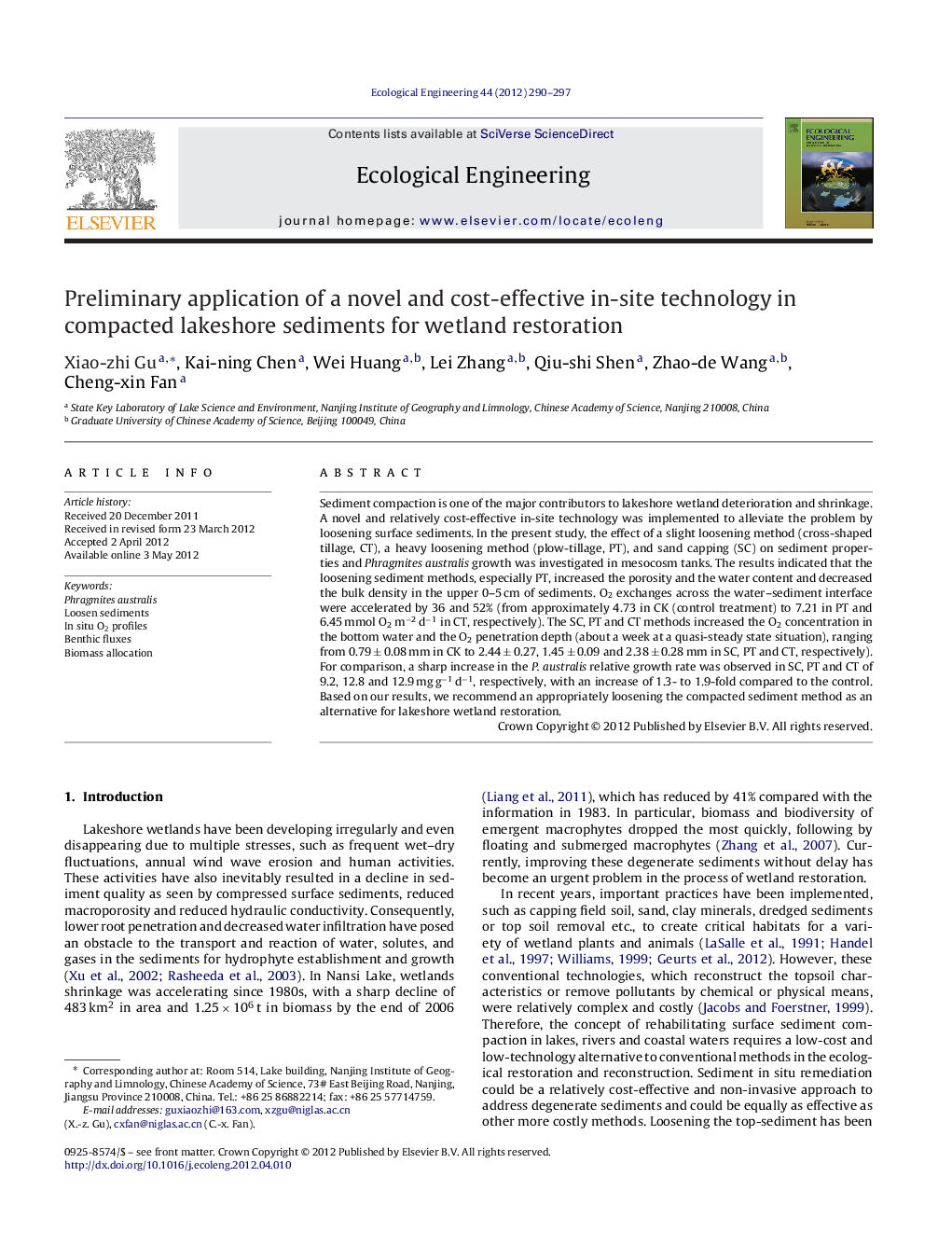| Article ID | Journal | Published Year | Pages | File Type |
|---|---|---|---|---|
| 6302721 | Ecological Engineering | 2012 | 8 Pages |
Abstract
Sediment compaction is one of the major contributors to lakeshore wetland deterioration and shrinkage. A novel and relatively cost-effective in-site technology was implemented to alleviate the problem by loosening surface sediments. In the present study, the effect of a slight loosening method (cross-shaped tillage, CT), a heavy loosening method (plow-tillage, PT), and sand capping (SC) on sediment properties and Phragmites australis growth was investigated in mesocosm tanks. The results indicated that the loosening sediment methods, especially PT, increased the porosity and the water content and decreased the bulk density in the upper 0-5 cm of sediments. O2 exchanges across the water-sediment interface were accelerated by 36 and 52% (from approximately 4.73 in CK (control treatment) to 7.21 in PT and 6.45 mmol O2 mâ2 dâ1 in CT, respectively). The SC, PT and CT methods increased the O2 concentration in the bottom water and the O2 penetration depth (about a week at a quasi-steady state situation), ranging from 0.79 ± 0.08 mm in CK to 2.44 ± 0.27, 1.45 ± 0.09 and 2.38 ± 0.28 mm in SC, PT and CT, respectively). For comparison, a sharp increase in the P. australis relative growth rate was observed in SC, PT and CT of 9.2, 12.8 and 12.9 mg gâ1 dâ1, respectively, with an increase of 1.3- to 1.9-fold compared to the control. Based on our results, we recommend an appropriately loosening the compacted sediment method as an alternative for lakeshore wetland restoration.
Related Topics
Life Sciences
Agricultural and Biological Sciences
Ecology, Evolution, Behavior and Systematics
Authors
Xiao-zhi Gu, Kai-ning Chen, Wei Huang, Lei Zhang, Qiu-shi Shen, Zhao-de Wang, Cheng-xin Fan,
